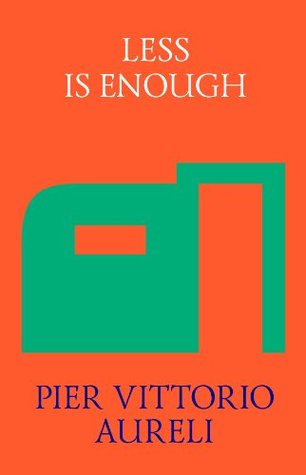More on this book
Kindle Notes & Highlights
Read between
January 18 - January 18, 2019
To be indebted does not only mean owing something to someone; it is also the feeling of guilt, and thus of inferiority, towards the creditor.
Asceticism is here understood as abstinence and self-discipline, as a willingness to sacrifice our present in order to earn our future
it can be both a means of oppression and also a form of resistance to the subjective power of capitalism.
architecture focused not on representation, but on life itself – on bios, as the most generic substratum of human existence.
the never-resolved tension between desire and restraint,
luxury is the possibility for the inhabitants to live according to their own proper rhythm.
This is the most controversial aspect of the monastery, because it shows how this institution is the progenitor of disciplinary institutions such as the prison, the garrison, the hospital and the factory.
the scheduling of time and its management are the foundation of modern and contemporary forms of production.
make the rule so consistent with the form of life chosen by the monks that the rule as such would almost disappear.
love and do what you want.
means and ends perfectly coincide.
Benedictine monasteries were highly productive, becoming centres of power and wealth
Franciscans openly rejected the idea of private property,
owning the work of others
If one refuses ownership of something one can still use it without possessing it.
after its use, the object would be released and thus shared with others.
the whole modern conception of rights is fundamentally shaped by the individual’s right to private property.
asceticism changed.
no longer a self-chosen practice, but more an ethical and moral condition whose goal was to ensure social control and increase dedication to work.
The poverty embodied by Serlio’s minimal house is a ‘productive’ poverty because it makes living conditions for the poor a little more bearable, so enabling them to reproduce their labour and to become productive subjects, ‘workers’.
paradoxical marriage between asceticism and property.
On the one hand subjects are encouraged to endure reduced living standards, and on the other they are pushed to become micro-entrepreneurs of their own minimal economy.
driven not by necessity but by the inhabitants’ urge to leave their own traces, that is to make the living space familiar, to claim it as their own.
subjective dimension of private property, which entails not only greed and appropriation, but also the illusion of permanence, rootedness and identity.
Baudelaire reduced his personal belongings to a minimum in order to use the city itself as a vast habitation,
privacy is not property, but rather the possibility of solitude and concentration
Ascetic restraint is easily interchangeable with marketing, especially in times of recession,
Jobs’s asceticism went beyond his living room in Los Gatos to become one of the most successful branding machines in the history of corporate capitalism.
it is the technology to which he devoted his ascetic life that has dramatically disrupted any possible control of one’s self.
Within industrialisation, distraction in the form of idle talk, lack of focus, daydreaming, was a way in which subjects would be able to disconnect themselves from production and stay within themselves. But in a cognitive production in which every fraction of our life is put to work, distraction becomes a form of production, because it pushes people to do many things at the same time.
commercialism is here wrapped with an aura of restraint.
‘I can’t imagine a life without structure, I’m sure that I have to create new rules to escape from other rules.
many artists, architects and designers feel the urge to promote social change through their proposals, but they rarely look at their own existence, which is what really constitutes the main source of their production.
we now know that less is just less and there is very little about it that can still be romanticised.


